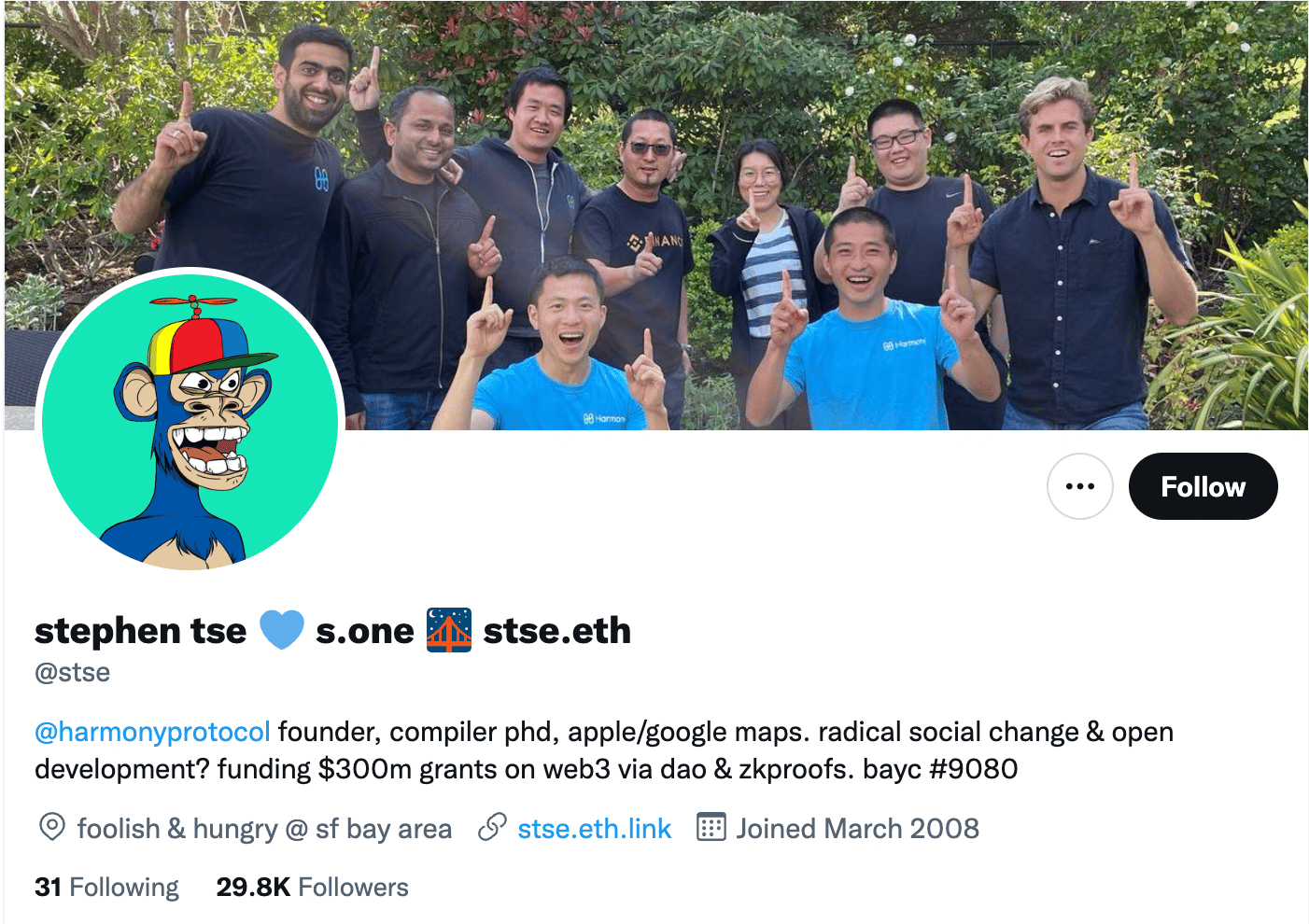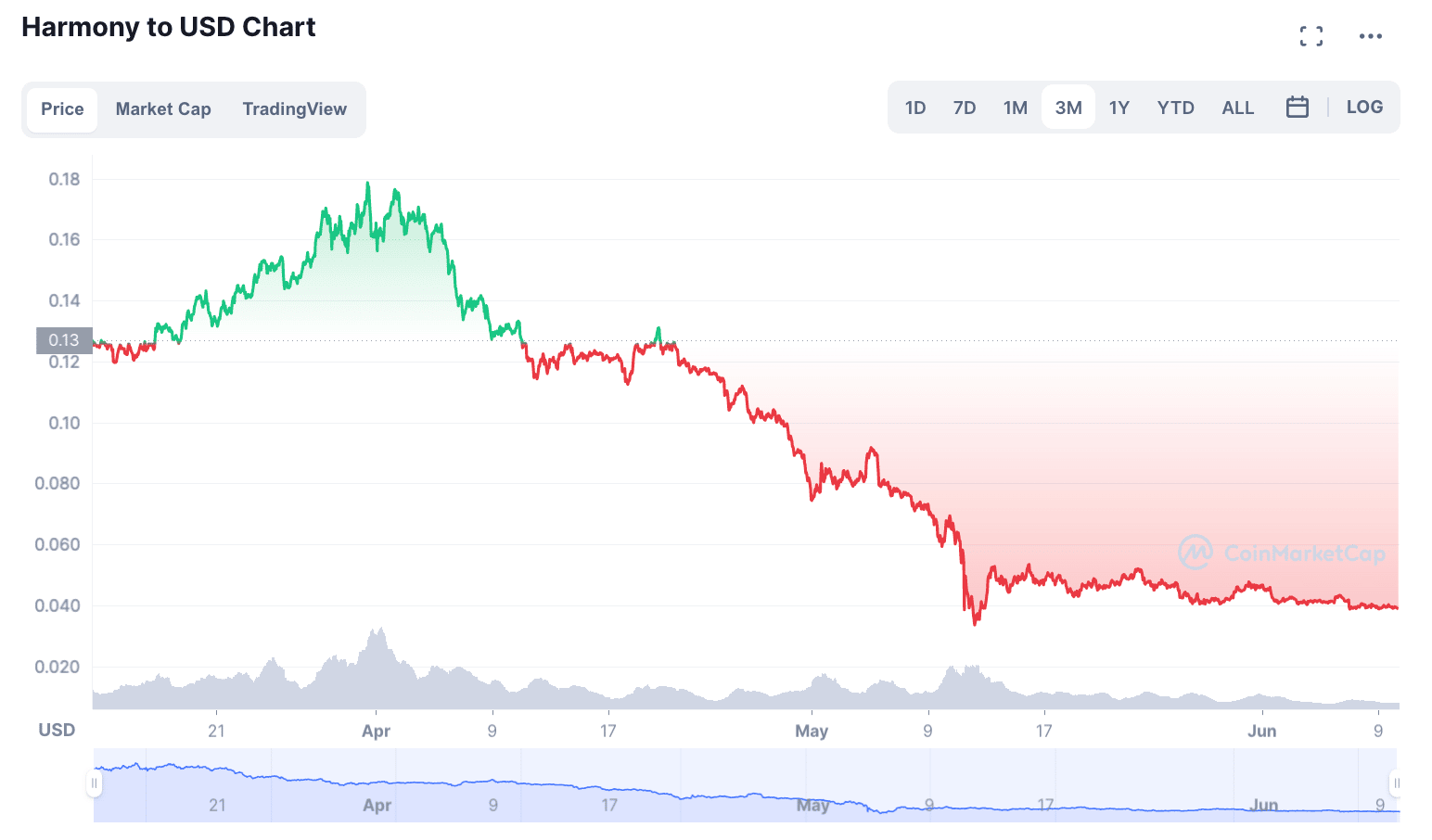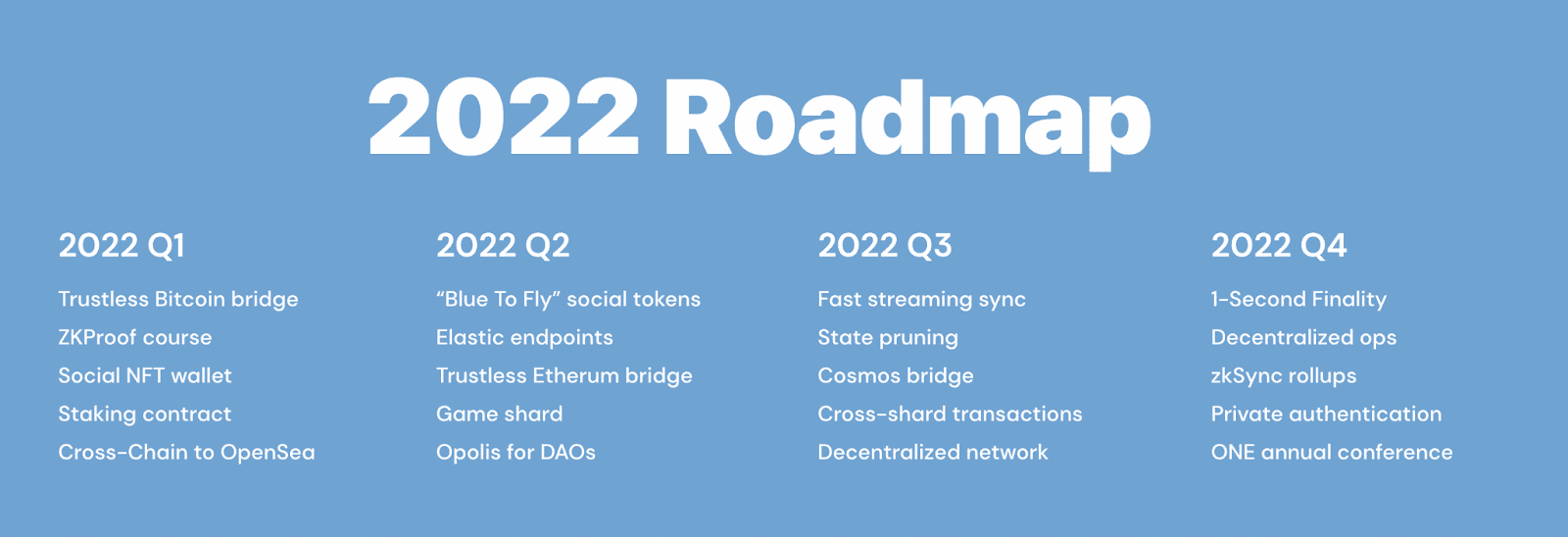Latest news about Bitcoin and all cryptocurrencies. Your daily crypto news habit.
Harmony (ONE) is a decentralized blockchain platform designed to optimize scalability and decentralization launched on the Binance Launchpad in May 2019; specifically, Harmony is designed to make creating and using decentralized applications on the Ethereum network much faster and cost-effective.
The project promises to deliver:
- High throughput
- 2-second transaction finality
- 100 times lower fees
- Interoperability with other blockchains
The team used the motto “decentralization at scale,” and stated Harmony would support the creation of scalable marketplaces for fungible tokens and non-fungible assets.
For example, DeFi Kingdoms, a fantasy pixel art game, is live on the Harmony network, which helps make the various game functions cost-effective. In addition to being a game, DeFi Kingdoms is a DEX, liquidity pool platform, and NFT market. Many of the game’s “actions,” such as depositing tokens into an LP, require a network confirmation; Harmony helps make these transactions pennies versus the $10+ of Ethereum’s network fees.
Harmony connects Proof-of-Work and Proof-of-Stake chains, helping to create a multi-chain ecosystem that prevents users from being locked on a single platform.
The following Harmony guide explores how Harmony works, the Harmony team, the ONE token, and the blockchain’s plans for 2022.
How Does Harmony (ONE) Work?
Harmony provides security, scalability, and decentralization (the “Blockchain Trilemma”) through sharding, the process of distributing a single dataset across several databases, which can be stored on multiple machines.
Harmony’s sharding splits the network into four sections:
- Validation
- Transactions
- Staking
- Block Creation
Validators aren’t required to keep a full copy of Harmony’s transaction history. To prevent hostile attacks, validators are assigned shards randomly, and validators are moved to new shards after each Epoch.
As of May 2022, Harmony limits each shard to 250 validator slots, known as BLS Keys. This is designed to be scalable to ensure the blockchain can meet future network demand increases.
There are four different shards in total. Shard 0 is the Beacon Chain and moves information between shards 1, 2, and 3. Transactions between each shard take an average of 2 seconds, with most of the activity occurring on shard 0.
Harmony operates using an Effective Proof of Stake (EPoS) model. This model is similar to your traditional Proof of Stake (PoS) validator and delegator model.
Validators can stake ONE tokens to run a node and process transactions, and delegators can stake ONE behind a validator to earn a percentage of future block rewards and transaction fees. Each validator is assigned shards at random and creates blocks that are then shared with delegators.
The difference between the two models is that EPoS uses a different reward system. Traditional PoS systems reward delegators based on how much they stake- the more staked, the more earned. With EPoS, validators are penalized for staking too much in a single node. Instead, smaller stakes receive higher rewards, thus forcing larger validators to decentralize and preventing a single point of failure.
Harmony (ONE) Company History: Harmony Founders
Harmony was founded in 2018 by Stephen Tse, who launched a fundraising project to secure $18 million USD in April 2019. The project caught the attention of top investors such as Consensus Capital and Lemniscap VC and sold over 2.8 billion ONE tokens, whilst 12.6 billion were set aside for pre-mining.
Before founding Harmony, Stephen built his reputation with a Ph.D. in cryptographic protocol in 2007, as well as founding several tech start-ups, including Spotsetter and Voice AI; Spotsetter being purchased by Apple.
Tse built Harmony with several founding members, including Rongjian Lan, Sahil Dewan, and Nick White.
Rongjian Lan previously worked as an engineer at Google and published over ten papers on Spatio-temporal querying and map-based visualization. Rongjian is currently the co-chair of ABC Blockchain Foundation and collaborates with over 100 top engineers from Google, Facebook, and LinkedIn.
Sahil Dewan is a Harvard Business School graduate and was the president of the blockchain and cryptocurrency club. After graduating, he worked at Draper Dragon Fund and has since advised several blockchain projects. Sahil also founded FuturEd, a company that combines education and technology to help fund over 100 educational institutions in India.
Nick White is a Stanford University graduate with a Master’s and Undergraduate Degree in electrical engineering. He’s coached over 20 teams from 5 continents and worked as a graduate teaching assistant at Stanford, where he researched artificial intelligence and applied mathematics with Prof. Bernard Widrow.
As of May 2022, Stephen remains the CEO of Harmony and has since expanded the team to scale the project.
What is ONE? Introducing Harmony’s Unique Staking Token
ONE is Harmony protocol’s native token and has three primary uses:
- Paying network transaction fees
- Voting in Harmony’s governance
- Staking as a delegator or validator to earn rewards
Each year, 441 million ONE tokens are rewarded to validators for their services.
There are roughly 12.08 billion ONE tokens in circulation out of a total 13,471,114,702. The token has a market cap of $502,803,521 and is ranked in the top 100 largest cryptocurrencies in the world. Each ONE token is valued at $0.04, down from an all-time high of $0.37 in October 2021.
Where Can I buy ONE?
If you want to buy harmony crypto, ONE tokens are available on most popular exchanges such as Coinbase and Binance using several payment methods.
You can buy ONE using a Debit/Credit Card in most countries, however, as of May 2022, Binance is not currently accepting payments from UK-based cards.
Should this impact you, you can trade cryptocurrencies such as USDT, BTC, and ETH for ONE.
What Projects Does Harmony Work With?
Harmony has already onboarded several high-profile projects to its ecosystem. One of these is Bored Ape Yacht Club (BAYC), in which BAYC NFT holders can import their apes into DeFi Kingdoms using a digital passport.
Harmony also plays a crucial role in DeFi Kingdoms (JEWEL), one of the most popular DeFi games in the market. DeFi Kingdoms is a fantasy-themed NFT game where players can complete quests, trade NFTs in the marketplace, and enjoy lucrative liquidity pool opportunities.
In July 2021, Harmony entered a full-stack partnership with Terra to boost mass adoption. The partnership allows Terra (UST) holders to use UST across DApps throughout the Harmony blockchain. Despite the recent Terra crash, the collaboration will continue as planned.
Despite only being founded three years ago, these collaborations show that the potential of both Harmony and ONE crypto is recognized on a global scale. But how much of an impact can Harmony make on the market?
The Future of Harmony: Can ONE Revolutionize Cryptocurrency?
Harmony provides dApp developers with a solid foundation to build on with scaling opportunities, fast transactions, and security through a unique sharding process. Despite being a relatively new crypto project, its speed of 2 seconds per transaction is significantly faster than better-known cryptocurrencies such as Ethereum, which takes between 1 to 1.5 hours to finalize payments.
As of May 2022, Harmony’s ONE token has been one of the fastest-growing cryptocurrencies, with an average ROI of 1,677% since its listing in May 2019. However, although it has a strong track record, it’s difficult to provide an accurate Harmony crypto price prediction due to current market fluctuations.
Nonetheless, Harmony’s team has a varied set of successes and experiences in the web2 and web3 industries which makes it a promising cryptocurrency. Harmony’s roadmap is regularly updated, and the team educates its base of users with Notion articles on its site.
Harmony has plenty of potential to help many projects scale, particularly those in the GameFi sector; time will tell if can deliver on its roadmap.
The post Harmony (ONE) Guide: How Will Harmony Help Crypto Projects Scale? appeared first on CoinCentral.
Disclaimer
The views and opinions expressed in this article are solely those of the authors and do not reflect the views of Bitcoin Insider. Every investment and trading move involves risk - this is especially true for cryptocurrencies given their volatility. We strongly advise our readers to conduct their own research when making a decision.



